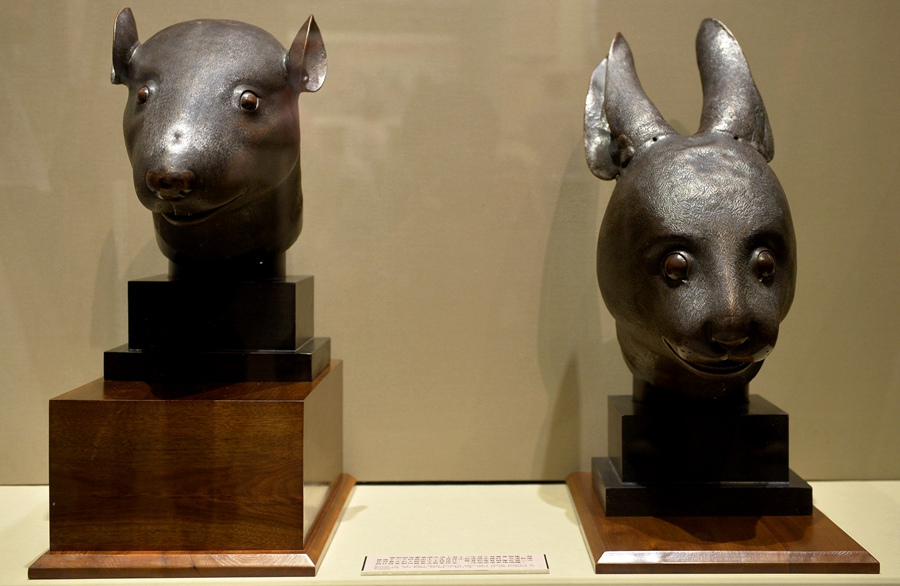
Bronze rabbit and rat head statues. (Photo/Xinhua)
Beijing has stepped up efforts to stop the sale of illegally obtained Chinese cultural relics by auction houses, collectors and museums.
In the latest case, Yokohama International Auction, in Japan, was informed by China's State Administration of Cultural Heritage on Oct 21 that several Tang Dynasty (618-907) frescoes and manuscripts of Buddhist sutras about to go under the hammer were stolen from China in the past century.
The auction house, founded by a Japanese citizen with Chinese ancestry, canceled the sale. The move was a step in the right direction-no profit was made-but their return to the unidentified client shows stronger international rules are needed.
A new Chinese regulation, released a day earlier, bans the auction of stolen, smuggled or looted relics. It is aimed especially at keeping such relics in China, but it also can be cited as a guideline when dealing with other countries and regions.
Since 1989, China has been part of several international conventions to prevent the trade in stolen relics.
"We will maintain the right of repatriation if any item is confirmed to have been illegally taken abroad," the cultural heritage administration said in a statement to China Daily.
One example would be the frescoes that were to be auctioned in Japan, which are from Dunhuang, in Gansu province. They were stolen by Otani Kozui, a Japanese abbot who was part of expeditions to China between 1902 and 1913, officials said.
There is reason for encouragement, according to Huo Zhengxin, a professor of international law at China University of Political Science and Law.
Worldwide, many guidelines also have been issued to push collectors to pay more attention to the origin of cultural relics. "The legal circumstances are getting better," Huo said.
A study by UNESCO shows there are at least 1.64 million sets of Chinese cultural relics scattered across 200 museums in other countries and regions. The China Cultural Relics Academy, an academic organization, estimates the number would be 10 million if private collections were counted.
Many such treasures were looted during wars and other unrest in China from the late 19th century to the early 20th century. Large-scale theft occurred in the 1990s because of the boom in international market demand.
In 2013, French businessman Francois-Henri Pinault donated the bronze heads of a rabbit and a rat to China. They had been robbed by British and French forces from the Old Summer Palace in Beijing during the Second Opium War (1856-1860).


















































